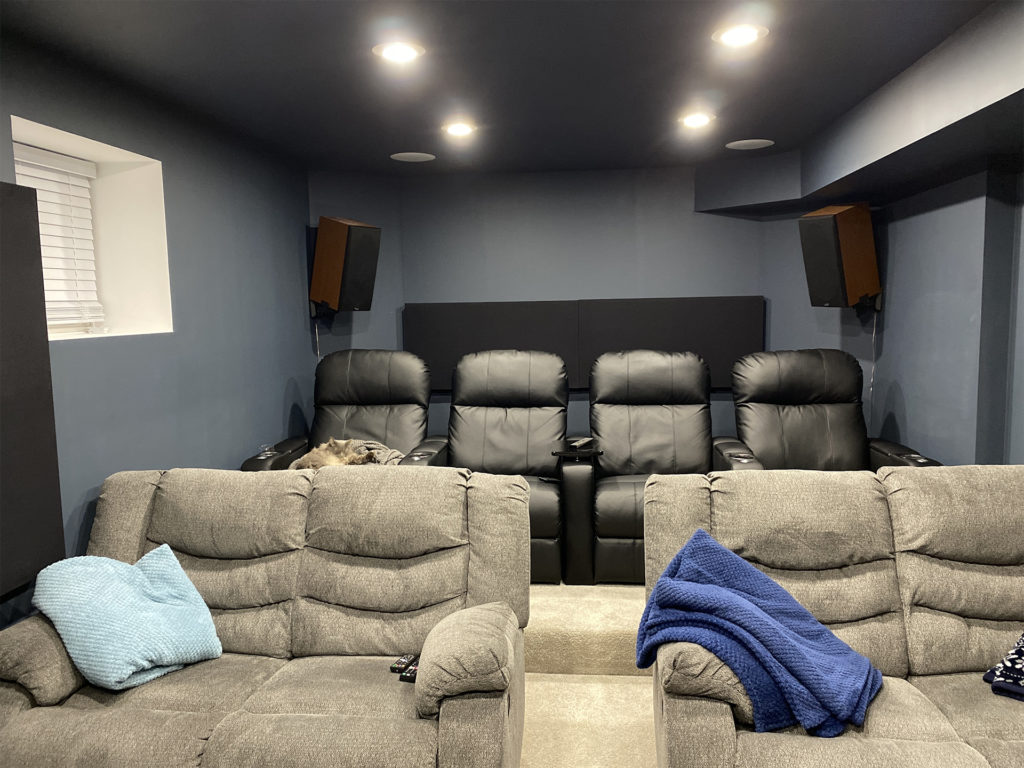Our room forms are designed to assist you with your room and on our end assist us in identifying your room acoustic issues. On the form, we will need to know your room dimensions along with the room usage. What you do in the room and how large the room will be determines how effective the treatment will be and what acoustical result you will get after the room is treated. With our room form process, you can attach up to four pictures which will show the surface areas within the room along with your current layout which may be set up correctly or may not be. With the data from the room form along with the pictures we will be able to identify the issues you are having along with the available treatment spaces. Low-frequency issues within small rooms can take up to 12″ to treat on every wall surface area. Middle and high frequency issues can be resolved with the proper rates and levels of absorption along with diffusion to manage reflections. We are a serious room acoustic designer. See what we are about.

In this room picture, we see many issues with set up and the lack of room treatment. We see our DAW set up with the right channel sidewalls made of glass and the left channel sidewall made of drywall. Glass is the worst surface you can have in any audio room, especially on the sidewalls. Sound takes on the characteristics of the materials it strikes. When sound energy strikes glass, it produces a harsh, brittle sound that has a negative impact on the room frequency response. Glass can never be in any critical listening environment. In the photo below we see some “seat treatment”. There are too many seats within this small theater room. The seats close to each wall will hear 50% system sound and 50% reflected energy from the sidewalls. This ratio of sound with a wall that close to the seat means that the person sitting in that seat will not be able to hear and dialogue. People place too many seats in their small theaters. The more seats the more difficult it is to get quality sound to all the seats. Choose enough seats for the major theater goers and then bring in free standing chairs for extras.

In this picture below, we have boxes filled with building insulation hanging on the rear wall of the client’s studio. The client was complaining that the room sounded “too dead”. He stated that the life of the music was taken out. This is what happens with boxes filled with building insulation. This material type absorbs middle and high frequency sound energy and does not absorb low-frequency energy at any rate of absorption that will make an audible difference. Building insulation was never designed to be an acoustical tool. It was designed to keep your room warm and cold. Building insulation material types also lack the proper rate and level of absorption for music and voice. Music and voice are different from noise. Most companies design for noise and tray to absorb as much energy as possible for every square foot of material type. This over absorption for music and voice produces a dead sound where the harmonics are drained out of the music and voice. Music and voice are all about the harmonics. You can not use a material type that over absorbs the harmonics. You must use a material type that was specifically designed for music and voice. Our Studio Pro Foam took 8 years to develop at a cost of 8 M. It has the proper rates and levels of absorption required for music and voice. Engineers call the sound it creates for vocals “organic” https://www.acousticfields.com/product/acoustic-foam/

In the picture below we can see the right channel sidewall reflections are striking a video screen placed in the corners of the room. The rig is also set up in front of a fireplace. Let’s deal with the fireplace issue first. A fireplace is a resonating chamber. It becomes a speaker which generates noise based upon the dimensions of the fireplace. This is the last thing you want between your speakers. You do not want a resonating chamber between your left and right channels. The sidewall reflections in any two channel rigg should be received from walls that are the same distance from each other. They should also be treated with the proper treatment types which can be diffusion or absorption. You never want to have a hard plastic surface area for the right channel speaker to bounce energy off of. Hard surface areas are never desirable for sidewall reflections. you want to use a sound absorption technology that was designed for music and voice.

Most foam technologies in the marketplace were designed for noise and not music and voice. Their design purpose is to absorb as much energy as possible for every square foot of surface area. This is why these technologies drain the life out of the music and voice and produce a “dead” sound with the music and voice energy over absorbed. Music and voice are different. They require a special rate and level of absorption that differs from noise. You can see why our foam technology is different in this link: https://www.acousticfields.com/about/. We absorb starting at 125 Hz. which is the starting range for most vocals. We absorb smoother through the 125 – 250 Hz. than most foams as you can see in the graph below. Our foam technology took 8 years and 2 m to create. It is the finest open celled foam for sound absorption of music and voice.








